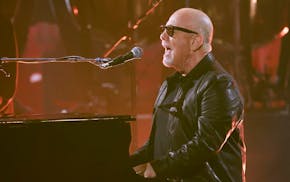What happens when seven strangers, picked to live in a house, work together and have their lives videotaped to find out what happens when people stop being polite and start being real? Television changes forever. "The Real World" recently celebrated nearly 20 seasons on the air with raucous awards honoring the best melees, make-out sessions and meltdowns. The special premieres tonight on MTV.
It would have been more fitting if the former participants had arrived at the event with black armbands, heads bowed in shame, begging forgiveness for the evil they had spawned. I would have been satisfied if more of the "graduates" had just followed the cue from Eric Nies, the bronzed beauty from 1992's inaugural season who appeared to be allergic to shirts. After an irreverent awards opening, which concluded with host Jeffrey Ross being tossed in the pool, Nies split.
"It's sad that it became all about making fun of people," Nies said a few days after the taping. "I'm a little disappointed that reality TV had such a huge opportunity to have an impact on people's lives, but most of the shows have been train wrecks."
Nies' lament might shock a generation that has grown up defining the genre by Ozzy Osbourne shuffling and swearing his way across the house or fire-breathing bachelorettes competing for the affections of a life-size Ken doll. But those first three seasons of "The Real World" were packed with so much heated and revealing discussion about race, religion and gender that there was little time to strip and slip into the hot tub -- a fallback device for just about every reality series ever since.
"If you look at the show over the years, there have always been gay characters, there has always been racial tension, there has always been the white guy learning something, but it's also gotten more sensational," said Laurie Ouellette, a communications professor at the University of Minnesota and co-author of "Better Living Through Reality TV," a new book that tracks the impact the genre has had on American culture. "Now it's got more of a spring-break feel."
The show's origins don't suggest that anyone planned on creating a platform that would launch the likes of Tila Tequila into stardom.
'We knew we had something'
In 1991 Jonathan Murray and the late Mary-Ellis Bunim were working on a scripted soap opera for MTV, which would feature unknown actors living together. The fledgling network quickly realized that the budget for such a show would be more than they could handle, and prepared to cancel the project. Murray and Bunim then shared an idea they were working on for Fox called "American Families," a documentary-style program inspired by the 1973 PBS film, "An American Family," which followed the trials and tribulations of the Loud family. With an estimated budget of $87,000, MTV signed off.
"Within 10 minutes of filming, we knew we had something," Murray said recently.
Ouellette said the time was ripe for the genre to blossom. The government had loosened rules about product placement, allowing networks to profit from cast members sipping on designer water, and the writers' strike of 1988 had launched the debut of "Cops" and "America's Most Wanted," cheaply produced hits that didn't require dialogue.
Still, those early cast members weren't thinking about becoming major TV stars. They were interested in living in a decked-out house, meeting people from different walks of life and having a vehicle to promote their causes.
For Beth Anthony, who participated in the second season, the show was an opportunity to introduce viewers to a positive lesbian role model, something she took quite seriously, even if it didn't quite live up to the "real" scenario.
"Maybe it was a generational thing, but we were more concerned about our outward image," she said.
'People want to see a fight'
The program would peak in 1994 -- for both the right and "wrong reasons.
That was the year the house welcomed Pedro Zamora, a well-spoken, modest, instantly likable man who had AIDS. He would become a public face for the disease, testify in Congress and be the subject of an award-winning graphic novel created by roommate Judd Winick. He died the day after the season finale aired, a loss referenced by President Bill Clinton.
But 1994 was also the year of the Puck. David (Puck) Rainey, a foul-mouthed bike messenger who reeked of body odor and bad manners, would become the first roommate to get kicked out of the house, due to his racist rants and his habit of dipping his fingers into the peanut butter jar after picking his nose.
"People today want to see a fight, they want to see drama, they want to see people hook up," said Nies, who is currently looking to develop reality shows with positive reinforcements. "I would hope that people would also want to hear about what we really think about life, and really get to know us."
Murray points out that recent seasons have taken a serious look at depression, alcohol abuse, addiction and eating disorders, continuing to serve as a mirror to society. But he's quick to add that his show isn't on some sort of noble mission.
"People are going to remember the hot-tub moments more than the serious stuff," he said. "We're not trying to preach to anyone. This is voyeurism entertainment, first and foremost."
And what are the chances that after nearly two decades of city-hopping, the show will ever be based in Minneapolis? About the same as an 80-degree day in January.
"It could happen, but what happens when we go to regional cities is that we're too big of a fish in a small pond," he said. "Everybody in the local media starts reporting on everything we do, people stand in front of the house and everyone blogs about it. In Los Angeles and New York, nobody cares about us, and that helps us keep that 'real world' status."
That might have bugged me 15 years ago. These days, I thank our lucky stars.
njustin@startribune.com • 612-673-7431

Neal Justin: Why Conan O'Brien is a national treasure

TV review: 'Jane' is the best heroine for families prepping for Earth Day

CBS will turn the lights back on for Billy Joel concert

TV to watch: Billy Joel offers concert for those of us who aren't big shots

